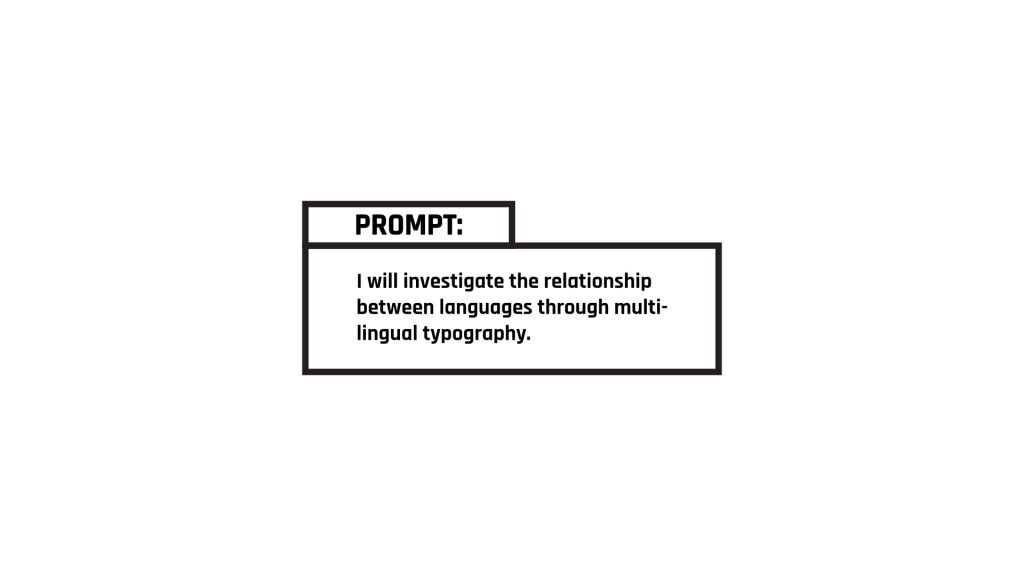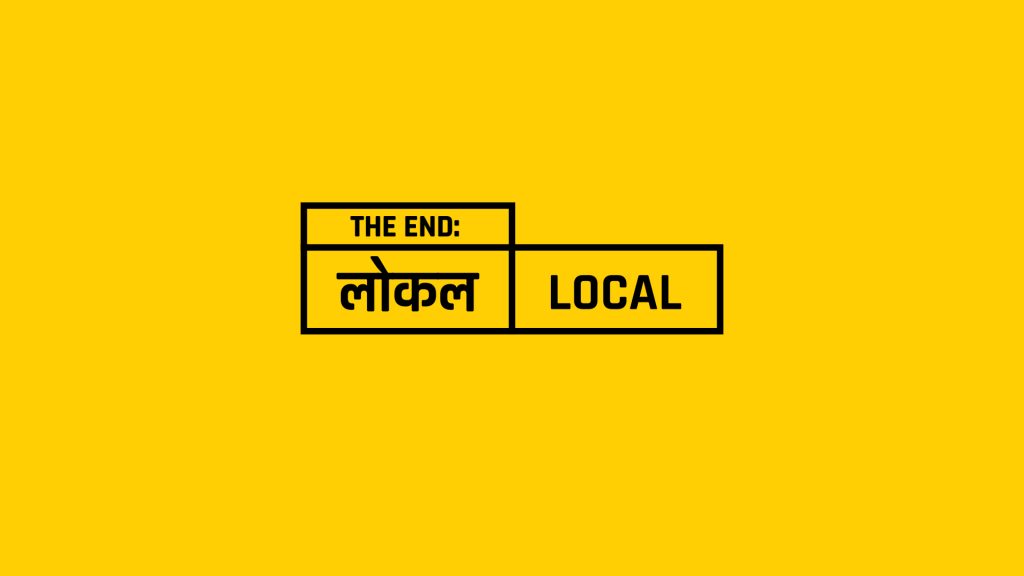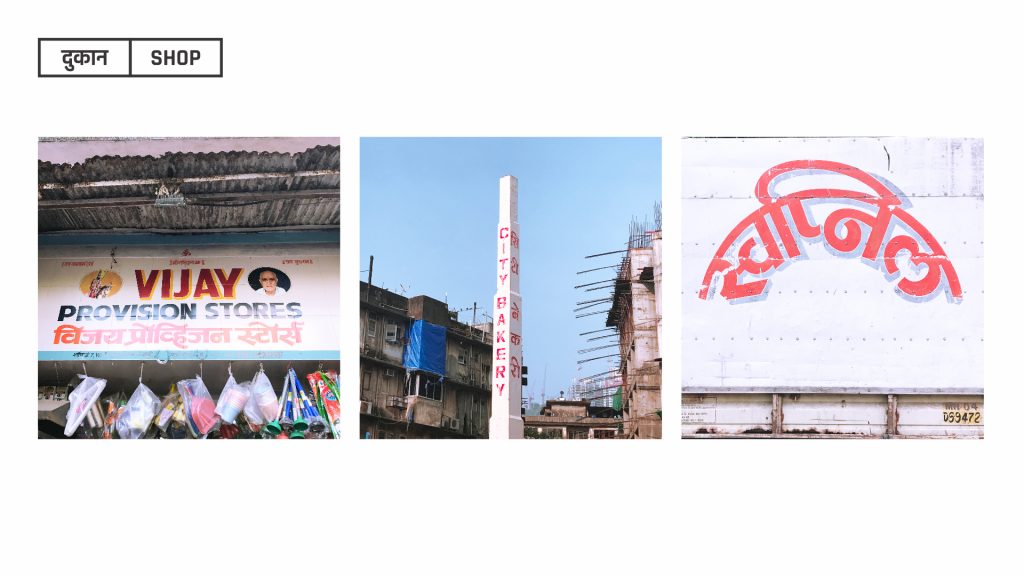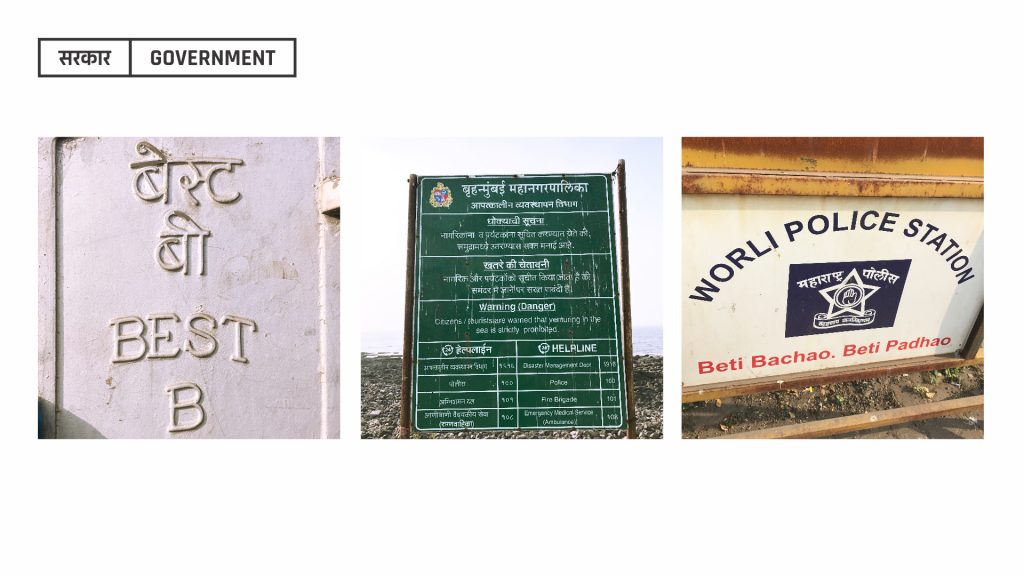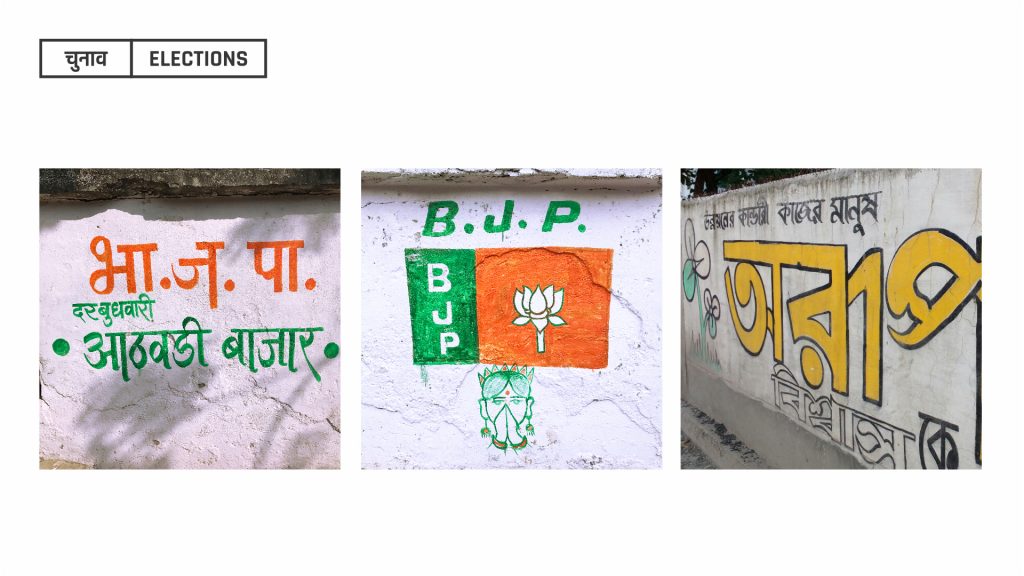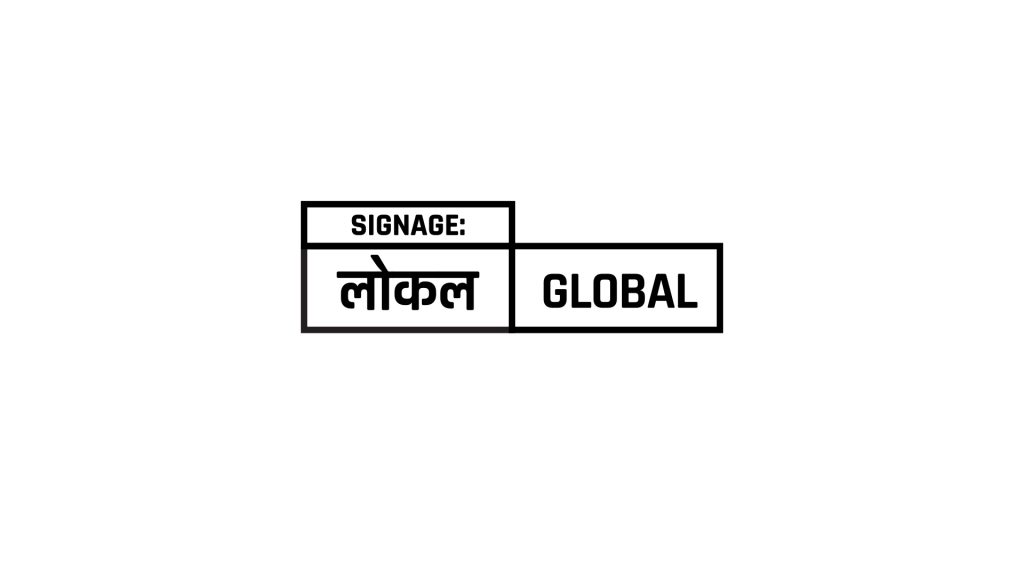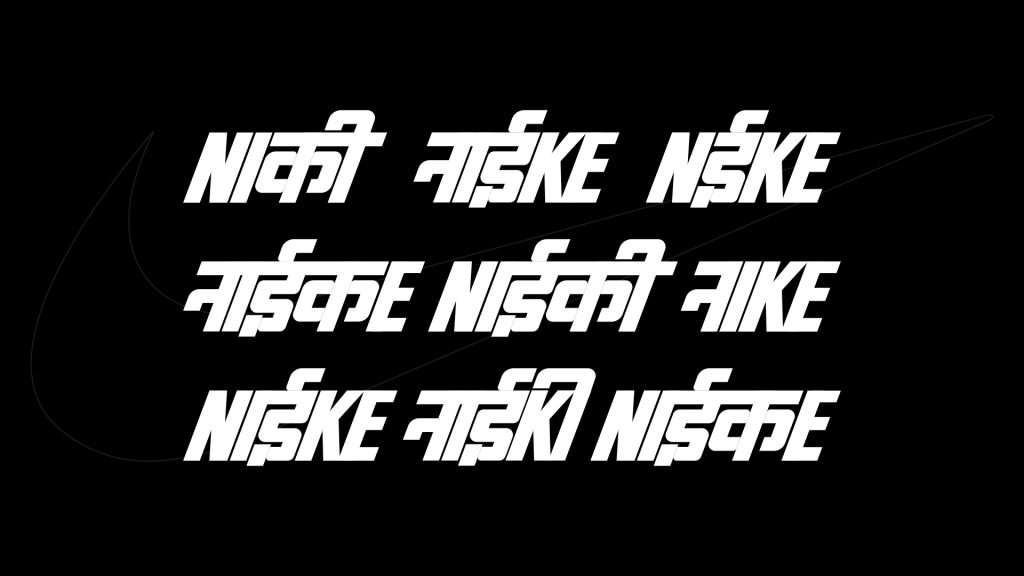“…LOCAL AND GLOBAL.“
How to begin investigating this prompt? I decided to look to my own environment. When I was in Mumbai, I took some pictures of signage in my neighbourhood. I only have a few pictures as it’s not a hobby I frequently did.
Signage is made differently according to different context. I looked at it in two different contexts; local and global. At the local level, I looked at signages for stores, local government and elections. At the global level, I looked at store signages only.
In the shops in my neighbourhood, signages can very. It could be in only the local language, only in English, or they would use both the languages. If the signage uses both English and language, both language is given equal importance or one is given more importance to the other in terms of care given to the typography.
Signages could either be hand-painted or digitally printed but they are increasingly becoming digitally printed as it’s a fast and cost-effective solution though it doesn’t last as long as a hand painted signage as you have to change it more frequently.
Signage at the local government level is used with both in the local language and English, both given equal importance typographically. Understandable as this information has to available and understood by everyone. Same could be said for signage made for elections. As it has to understood by the general population, both English and the local language are both implemented though I have seen cases where it’s one or the other.


http://www.highstreetphoenix.com/store/adidas 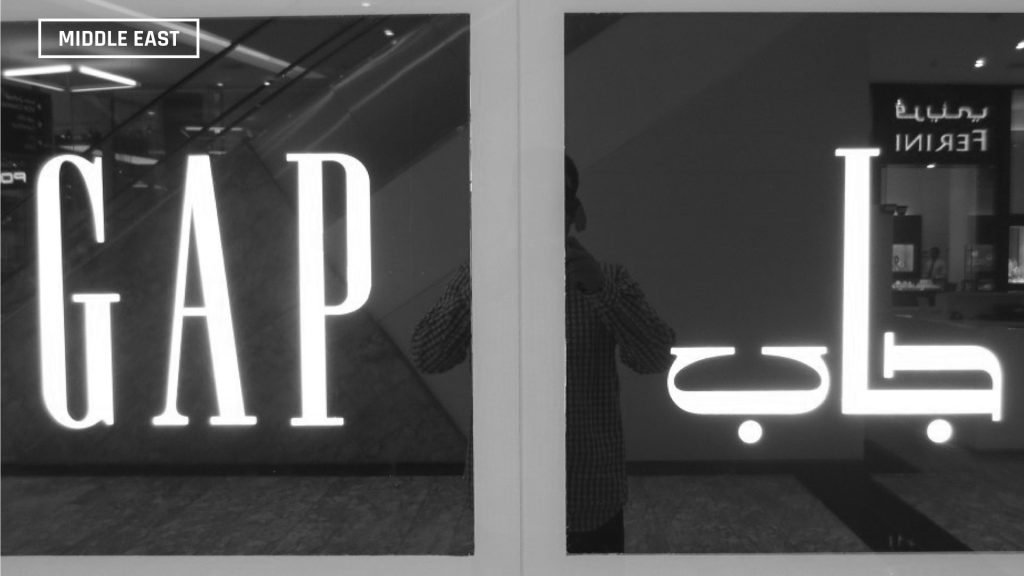
http://istizada.com/blog/arabic-logos-of-big-global-brands/
Next, I looked at store signages for international brands in two different cultural contexts. Mumbai, India and the Middle East. In the examples above, even though the brands are two different ones, you can see how typography is treated. In Mumbai, the Devanagari type signage is made with a default Devanagari font and then put off to the side. In contrast, in the Middle East, the signage in Arabic is treated with equal care to the English.
Of course, the difference in the both of cultural contexts has to be considered. In the Middle East, the dominant language is Arabic. In India, there is no one dominating local language since there are so many and just picking one as a dominant language would be favouring one culture over another. A lot of people say Hindi is a dominant local language but Hindi is not a language commonly used in the southern or eastern regions of India. As a result, English becomes default.
I decided to create signage for an international brand in India and treat like how they would in the Middle East. The brand I decided on was Nike and the place I chose for their store was Mumbai where the dominant local language is Hindi and Marathi; both which use the Devanagari script. It is mandated by law that you need to have local language spelling of stores in India so why not do it in style instead of having it off to the side.
As I was making the Devanagari version, I realized all the typographical errors I was making. My Devanagari version is not as vertical as the English one. There are also problems with spacing within each letter which I found frustrating. I also don’t think some of the letters look like it’s the same font as the english one. I also gave myself two days to make this so I have to give myself some leeway for this exercise. In the end, I made a Devanagari Nike logo, not wholly satisfied with it but it’s a start.
I was also not completely happy with the binary between languages; that it has to either Hindi or English. That’s not how language works in India. We sprinkle in Hindi into English and English into our Hindi. I wanted the logo to be more reflective of that behaviour so I just mixed both the scripts into the logo. Honestly I don’t think the logo is legible to people who speak either language but creative liberties. It could be a campaign ¯\_(ツ)_/¯
We had an interesting discussion in Studio this week. Shankar mentioned that if someone from India were to wear a Nike t-shirt, they would prefer the English one to the Hindi one because that’s the one they would want to be associated with and it’s true. There is a certain cachet (I don’t know if that’s the right word) to knowing English. It’s considered a sign of education and money.


